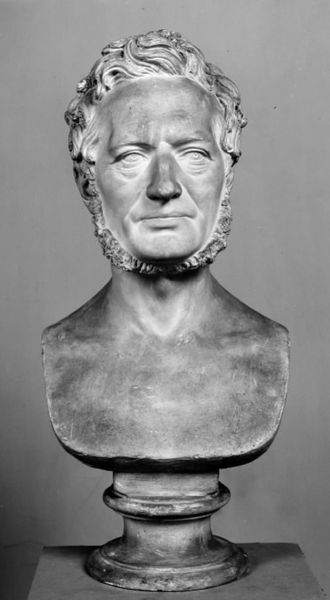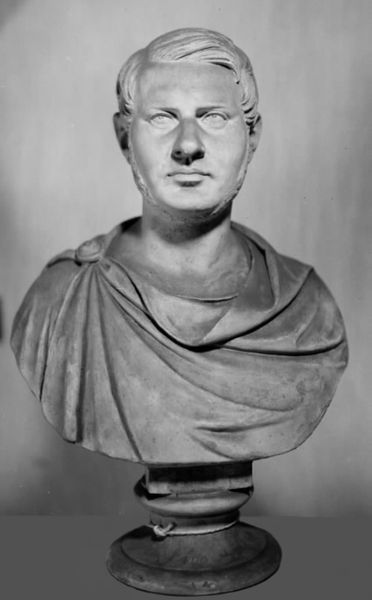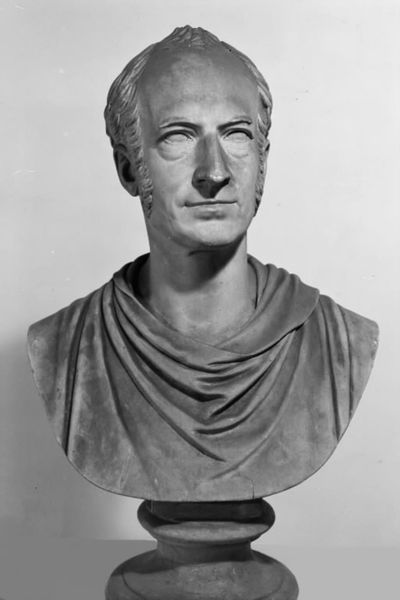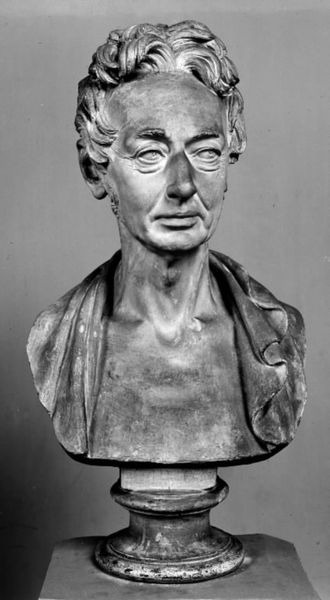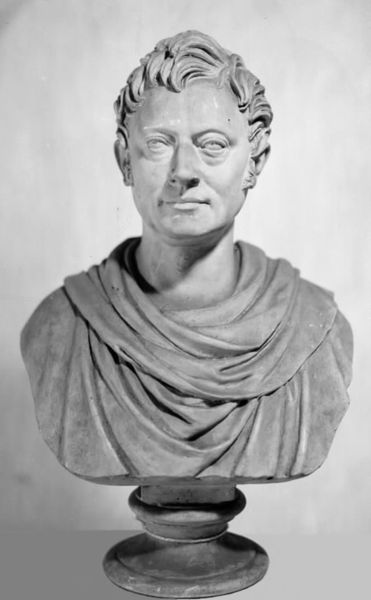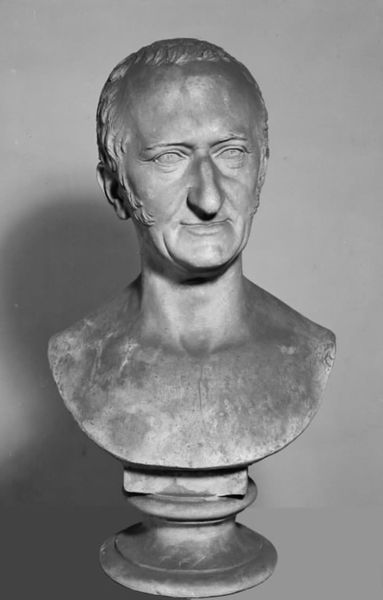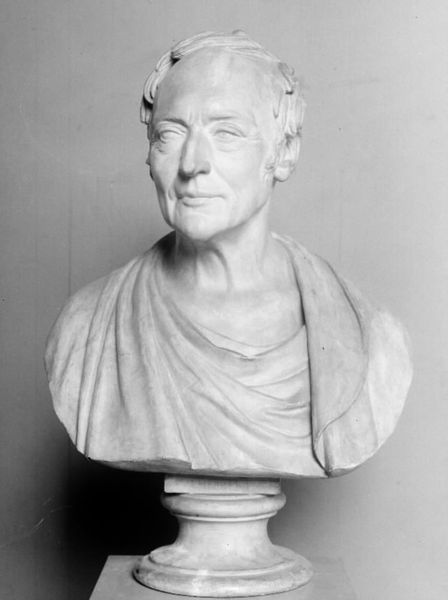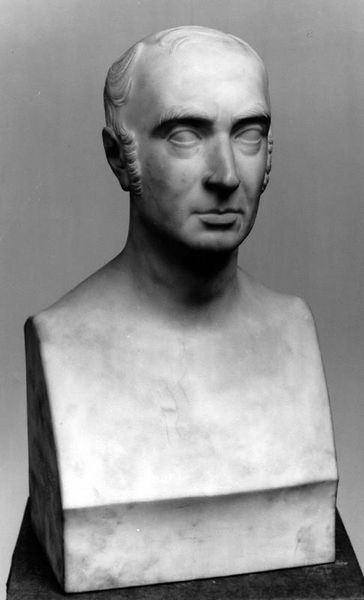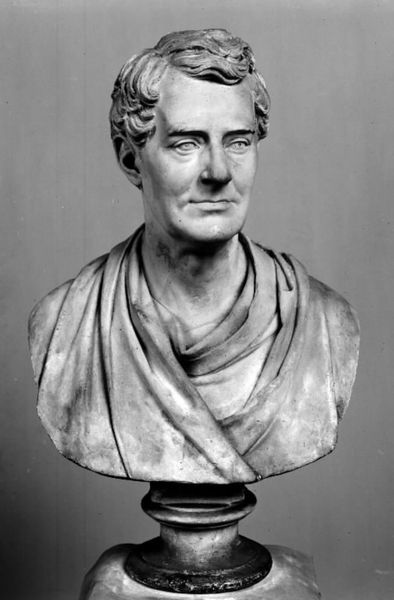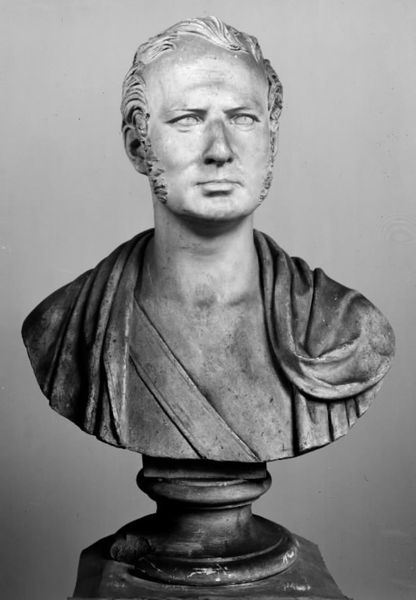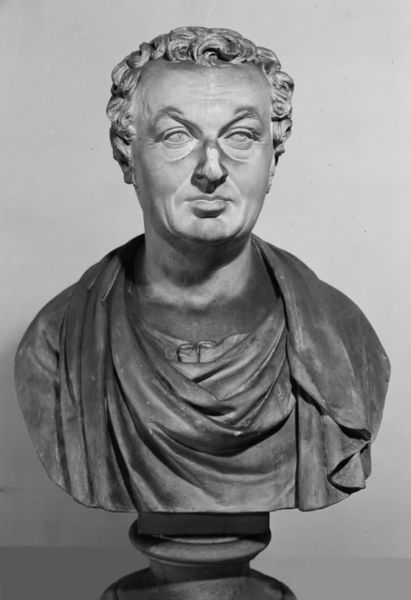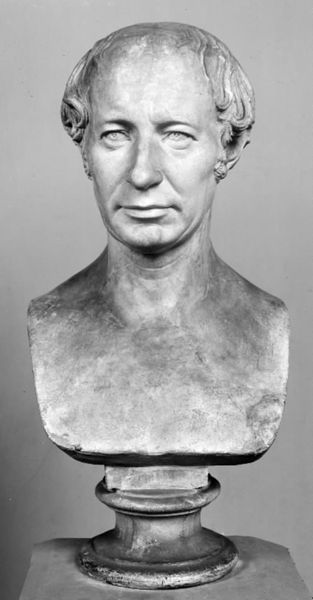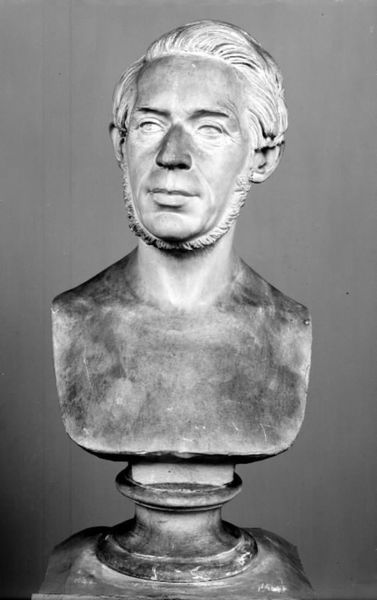
sculpture, marble
#
portrait
#
neoclacissism
#
portrait
#
classical-realism
#
sculpture
#
marble
Dimensions: 76.2 cm (height) (Netto)
Curator: Standing before us is a marble bust titled "Komponisten C.E.F. Weyse," crafted in 1857 by H.W. Bissen, currently residing in the Statens Museum for Kunst. Editor: The smooth, almost polished texture of the marble immediately strikes me. There’s a certain serenity, an idealized timelessness evoked by the medium itself. Curator: Bissen’s choice of marble aligns directly with the Neoclassical style, reflecting the period’s fascination with classical antiquity and its values. We can see a clear embrace of idealized forms and a pursuit of excellence in technical skill. I wonder about the availability of marble and the skill of the artisans who likely assisted Bissen in its creation. This was not a solitary endeavour. Editor: The bust speaks to more than just aesthetics; it's about the canonization of Weyse, cementing his cultural and artistic status. I’d love to know more about Weyse’s compositions and his societal standing – who was he composing for, and what narratives did his music carry within the cultural landscape of 19th-century Denmark? Curator: Bissen would have certainly considered his role carefully within the project, as he’s also choosing to commemorate Weyse in a way that communicates a story to a specific social group. The very act of memorializing through sculpture tells you everything, especially in the face of industrialization where sculpture represented a tie to the past and elite values. Editor: I agree. I also find myself considering how Weyse himself might have viewed this representation. As we grapple with today's visual culture and the politics of representation, would he identify with this serene, somewhat stoic depiction? Was this commission aimed at immortalizing his legacy? There are gender implications at play, too – why were his achievements as a composer considered noteworthy, and who got to determine his significance? Curator: Exactly. And consider the labor: the quarrying of the stone, the transportation, and the carving itself. Every stage is infused with socio-economic context that informs the final work. How many hands touched the stone before Bissen himself? Editor: The choice of the artist to render Weyse's likeness in this particular way adds so many layers, especially within our own contemporary perspective on identity and historical narrative. Curator: Definitely. Thinking about marble and sculpture reminds us how even materials and the processes carry within them economic realities and power structures from a particular time and place. Editor: It prompts us to keep probing – the stories artworks silently carry, waiting for our questions and engagement.
Comments
No comments
Be the first to comment and join the conversation on the ultimate creative platform.
